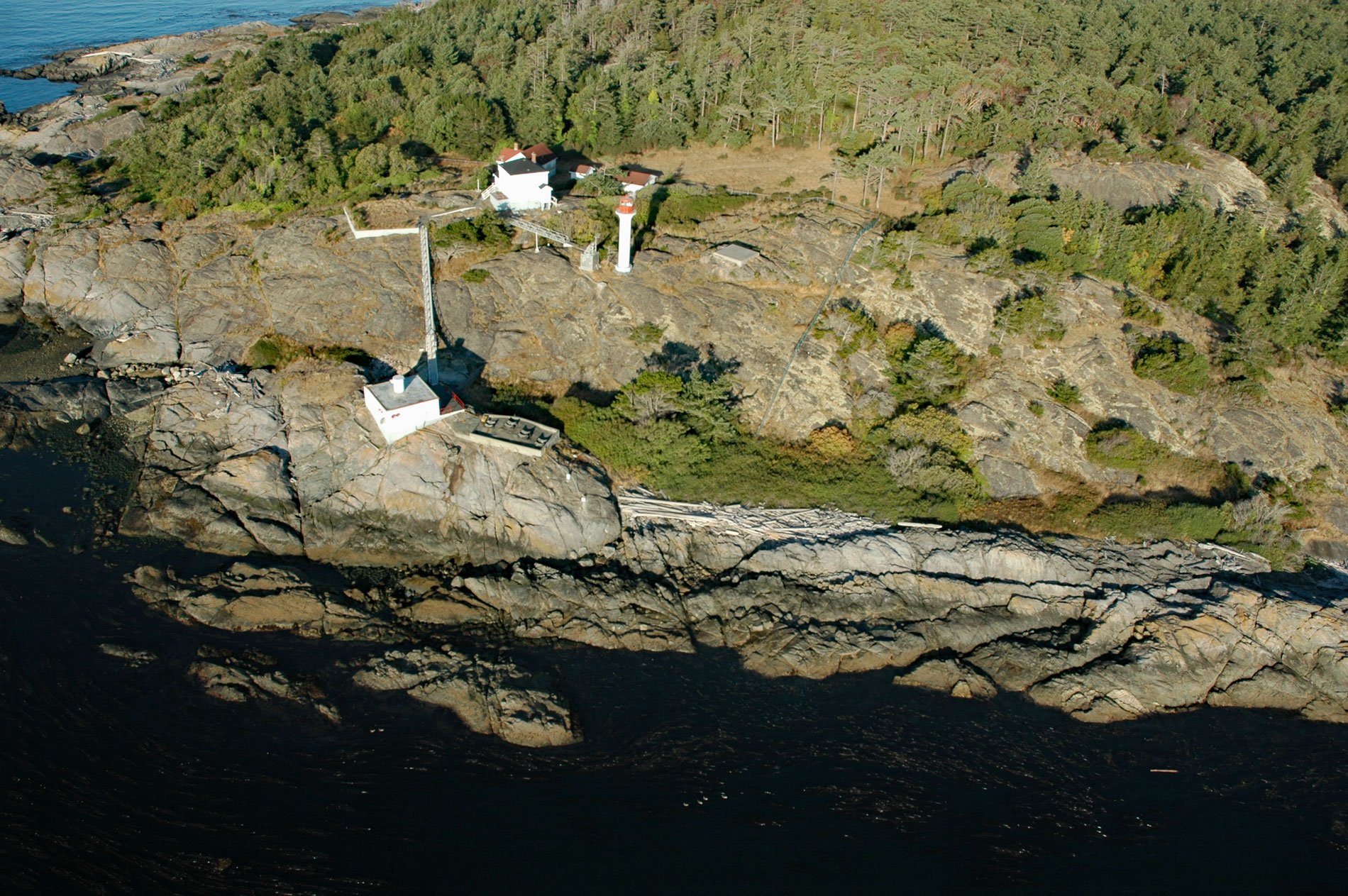Discovery Island is part of a group of islands in Oak Bay off the southeastern tip of Vancouver Island at Seabird Point, about 17 miles (27 km) southeast of Sidney and 6.5 miles (10.5 km) east of downtown Victoria, British Columbia. Discovery Island is about 2.5 miles (4 km) offshore and is the largest of the group. The island was named in 1846 by surveyors in recognition of HMS Discovery, the vessel commanded by Captain George Vancouver during the survey of Puget Sound in 1792. The adjacent Chatham Islands were named after the escort ship HMS Chatham commanded by Lieutenant William Robert Broughton.
The Songhees, or Lekwungen nation, are Coast Salish people who have resided on southeastern Vancouver Island for millennia. In 1862, the Pacific Northwest smallpox epidemic started in Victoria and killed about two-thirds of all native people in British Columbia. The Songhees were largely spared due to the smallpox vaccine given by Hudson’s Bay Company physician Dr. John S. Helmcken during the early stages of the epidemic. Almost all the Songhees abandoned their villages and self-quarantined on Discovery Island. Infected people were denied entry, and due to these diligent efforts, the Songhees survived the epidemic with few deaths. Today the Songhees First Nation controls the northern part of the island. In 1867, the southern part of the island was purchased from the Crown by George Jay and James Chestney Bales. In 1871, the partnership between Jay and Bales dissolved, and Bales took possession of the land. In 1901, Bales sold the land to William James Palmer, who then sold the land to Warburton Pike in 1912. After Pike’s death in 1917, the property was taken over by Pike’s bank and subsequently sold to Captain Ernest G. Beaumont. He and his wife built a house on Rudlin Bay designed by Francis Rattenbury, who designed the Parliament Buildings in Victoria. The Beaumonts lived in this house until 1967, and upon his death, the property was given to the province of British Columbia. In 1972, it became the Discovery Island Marine Provincial Park.
Sea Bird Point is named for the paddle steamer Sea Bird, one of the first steamboats to operate on the Fraser River during the Fraser Canyon Gold Rush of 1858–1860. On September 7, 1858, Sea Bird was bound from Victoria to the Fraser River loaded with gold rush passengers when the steamer caught fire near Discovery Island, forcing the captain to deliberately ground the vessel on the eastern point of Discovery Island. Though the steamer was eventually freed, its name has since been attached to the point. A lighthouse was built in 1886 on Pandora Hill at Sea Bird Point. Richard Brinn was appointed the first keeper of the lighthouse, and in 1902, his daughter Mary Ann Croft became the first female lighthouse keeper in Canada. The light station has two homes for the lightkeepers, a helicopter pad, a diesel power generation station, a well, a water reservoir, a boathouse, and a dock. The station was automated in 1996 after being continuously manned for 110 years. Read more here and here. Explore more of Discovery Island and Sea Bird Point here:

